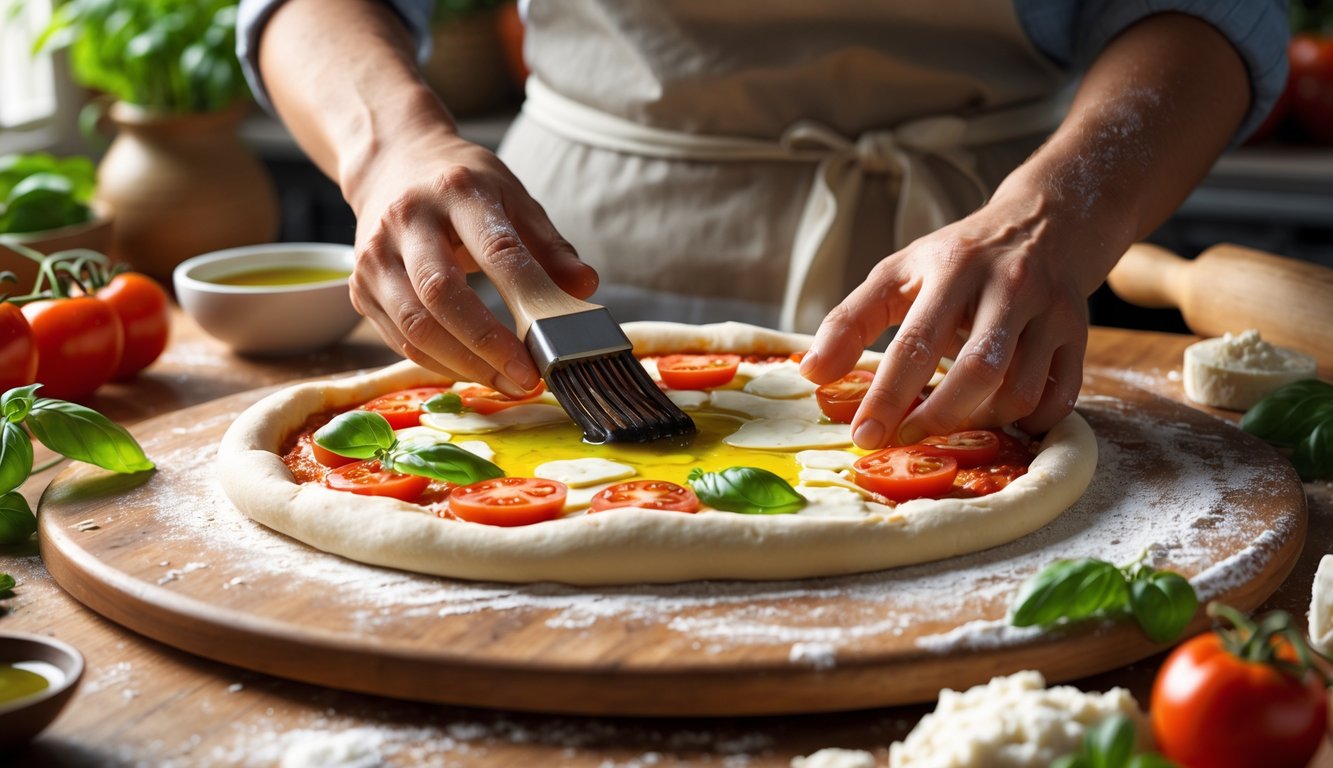
Alright, so here I am, flinging dough around like I’ve seen in a million YouTube shorts, but—ugh—the middle’s still chewy and floppy, and I’m glaring at my oven like it’s personally sabotaging me. Has anyone else noticed there’s always some “crucial step” no one really spells out? They’ll yammer about letting dough “rest” and then hype up type 00 flour (which, have you seen those prices? Outrageous) but I swear, every home pizza person is just skipping over this one thing. Letting your dough actually warm up to room temp before you try shaping it—it’s not some myth, it’s the difference between that bubbly, golden crust you drool over and the sad, pale mess I keep dragging out of my oven (seriously, it’s not just me, check Repizza, apparently cold dough is basically unmanageable).
Ever just dump cheese and sauce on a cold, stiff disk because you’re tired and figure “eh, the oven will fix it”? Yeah, me too. Turns out, that’s just asking for disaster. The science is annoyingly clear: gluten chills out at room temp, so the dough actually stretches instead of tearing and fights back less. I read about it on Pizza Oven World—apparently, kitchen temp can totally wreck your crust. Not that I want to hang around for thirty minutes waiting for dough to “acclimate,” but otherwise, you get a pizza that’s only impressive to your dog. Or maybe your cat. Whatever.
The Key Step Most Homemade Pizzas Miss
I always see people knead and proof like they’re auditioning for some baking show, but then skip the “preheat your stone until it’s nuclear” part. No hot stone? Congrats, you get a limp, pale crust. Every. Time. It’s not even a debate. I’ve tried baking on a cold pan, and the result? Sad and doughy. Preheat a stone or steel until your smoke alarm is nervous, and suddenly you get a bottom that snaps and toppings that actually sizzle. My brother literally used hardware store tiles once—smoked up the kitchen, but honestly, the crust was almost legit. Who needs a $60 pizza stone anyway?
Why This Step Matters
You can let dough rise for hours, but if you don’t have enough heat stored in your stone or baking sheet, forget it. Marc Vetri (he’s a real chef, not just some guy on TikTok) says you need that thing at 500°F minimum, and honestly, it takes longer to heat up than to make the toppings. Commercial ovens? They’re running at 800°F, easy. I mean, who has that at home? Nobody, but you can fake it—sort of.
I’ve literally tossed a pizza onto a cold pan and just gotten a gooey mess. But when I use a super-hot stone—suddenly, the crust is crispy, the cheese bubbles, and I almost feel like I know what I’m doing. There’s no secret. Just heat. My brother’s tile hack? Way more effective than any “special” dough recipe I’ve tried.
How Restaurants Get It Right
I’ve watched pizzerias churn out pies nonstop. Their stones never cool down, ever. No one’s fiddling with thermometers or timers; they just keep cranking. I read somewhere (trade journal, maybe?) that those ovens sit at 700–900°F all day. Anthony Falco (he’s apparently a pizza consultant, which is a real job?) claims “true pizza” needs “actual danger levels of heat.” Not sure what that means, but I believe it.
Home ovens? They max out at 500°F if you’re lucky, and lose half that heat every time you peek. I ruin at least one pizza per batch because I can’t stop checking. There’s a list of mistakes here—I’ve made all of them. Letting your stone “soak” for an hour sounds insane, but it’s the only way I’ve gotten close to a real crust. Of course, I get impatient and shove the pizza in too soon, then end up chewing on disappointment.
And those conveyor-belt ovens at chain places? Totally cheating. Unless you want to go full industrial in your kitchen (why?), just accept you’ll never match that speed or consistency.
Common Mistakes at Home
Nobody believes me, but the recipe isn’t the problem. It’s the heat. People keep pulling pizzas early, or using a cold baking sheet (which, honestly, is almost as bad as microwaving it). You pick up a slice, it flops, cheese slides off—yep, underbaked.
Biggest mistakes? Not preheating long enough, opening the oven door every two minutes, using the wrong rack, and burning parchment paper because you forgot it can’t handle 500°F. My friends never time their stones—they just guess when it’s “hot enough,” which is, let’s be real, never.
And here’s the kicker: people think turning up the oven will burn the pizza, but actually, it’s the lack of real bottom heat that leaves you with pale, rubbery crust. I’ve wasted so much good cheese trying to salvage underbaked bases—don’t do it. If you want something that even resembles pro pizza, get an outdoor oven or at least let your stone preheat until your kitchen feels like a sauna.



